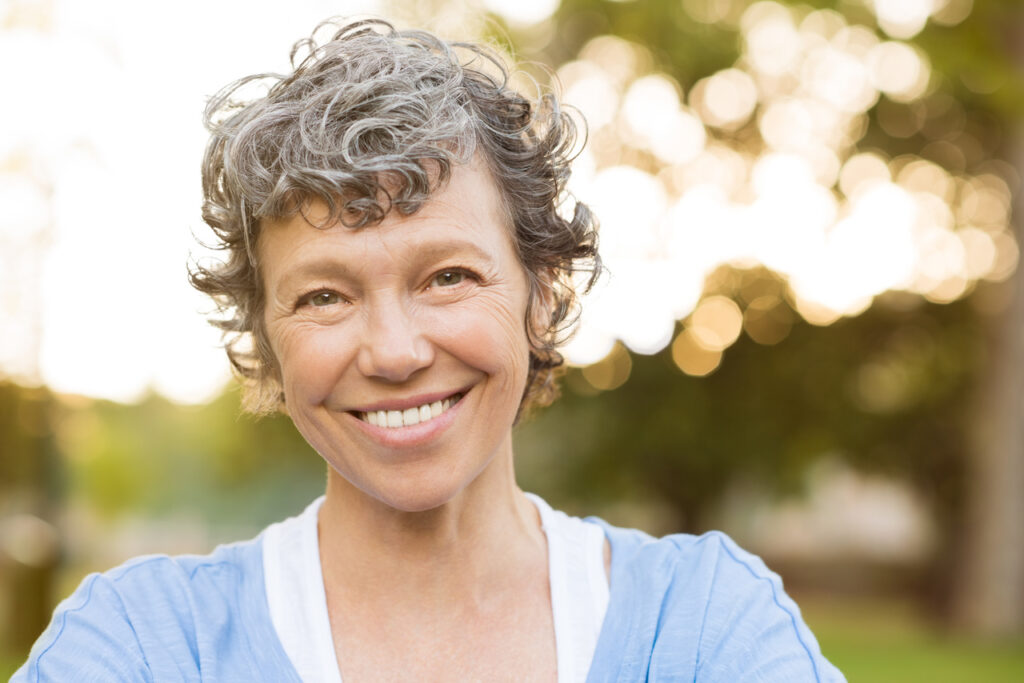
Age + women or which eye disorders affect women
It is well known that many eye diseases are related to age, but it may not be known that gender can also have an impact on the development of certain eye disorders. This happens with dry eye, a problem that affects 30% of our society and which is up to three times more prevalent in women over the age of 50 than in men, according to studies.
Dry eye and hormonal changes
As Dr María Gessa, a specialist at Miranza Virgen de Luján, explains, “there’s a hormonal cause; thus, differences increase especially after menopause.” Dry eye is indeed one of the most characteristic symptoms of this stage in a woman’s life, who starts to notice more frequently a sensation of grit or a foreign body in the eye, itching, tearing, heavy eyelids and even blurred and fluctuating vision. This is mainly due to changes in hormone levels that alter gland secretion under the eyelashes, which is involved in the tear film.
“When discomfort associated with dry eye appears or increases, we should not settle for using artificial tears alone, if these are not sufficient, as there are different treatments that can increase daily visual comfort,” according to Gessa. The ophthalmologist is part of the specialised Dry Eye Areas at the Miranza clinics, where we perform a comprehensive diagnostic study of this multifactorial disease and offer innovative treatments during consultation. For instance, one of the technologies on the rise is intense pulsed light (IPL), which stimulates proper functioning of the eyelid glands to improve tear quality, which is more frequently altered in women
When the tear duct becomes blocked
Dr Alejandra Amesty, a dry eye and oculoplastics specialist at Vissum Grupo Miranza, adds that watery eye may also be more common among women: “One of its possible triggers, tear duct obstruction, occurs in 4 to 5 women for every affected man.” The fact that tears do not drain properly and accumulate on the eye surface is not only annoying, but can also increase the risk of recurring infections. To prevent this, oculoplastic surgeons perform a surgery, usually by means of the dacryocystorhinostomy technique, which restores tear flow and solves the problem very effectively in most cases.
Thyroid and orbital eye disease in women
On the other hand, women are also the group most affected by thyroid orbitopathy, the most common disorder of the eye orbit and which, when due to Graves’ disease (the main cause of hyperthyroidism), has an incidence of 1 in every 5,000 women compared to 1 in every 25,000 men, i.e. five times more. Moreover, according to Dr Amesty, “being a smoker increases the risk of developing this disorder, which can have a significant impact on patients’ quality of life.”
Thyroid orbitopathy often leads to ‘bulging eyes’ or exophthalmos, which, in severe cases, causes many patients to not recognise themselves when they look in the mirror. Furthermore, it not only has an impact on psychological, but also on eye health, as protruding eyes are more exposed to dryness, irritation, etc. On the other hand, they can compress internal structures in the orbit, such as the optic nerve or the extraocular muscles. It is mainly in these cases where you need to act, whereas orbital decompression surgery may be required to reposition the eye, once the underlying thyroid issue has been controlled with drugs.
Other common eye disorders in women
En cuanto a la salud ocular femenina, la Dra. Gessa concluye que “la mayor esperanza de vida de las mujeres (alrededor de 5 años más que los hombres en España) también explica que lleguen a desarrollar más enfermedades relacionadas con la edad, como las cataratas, la DMAE o el glaucoma, que conviene detectar precozmente para mantener la mejor visión”.
As to women’s eye health, Dr Gessa concludes that “the longer life expectancy of women (around 5 years longer than men in Spain) also explains why they develop more age-related diseases, such as cataracts, AMD or glaucoma, which should be detected early to ensure the best vision.”